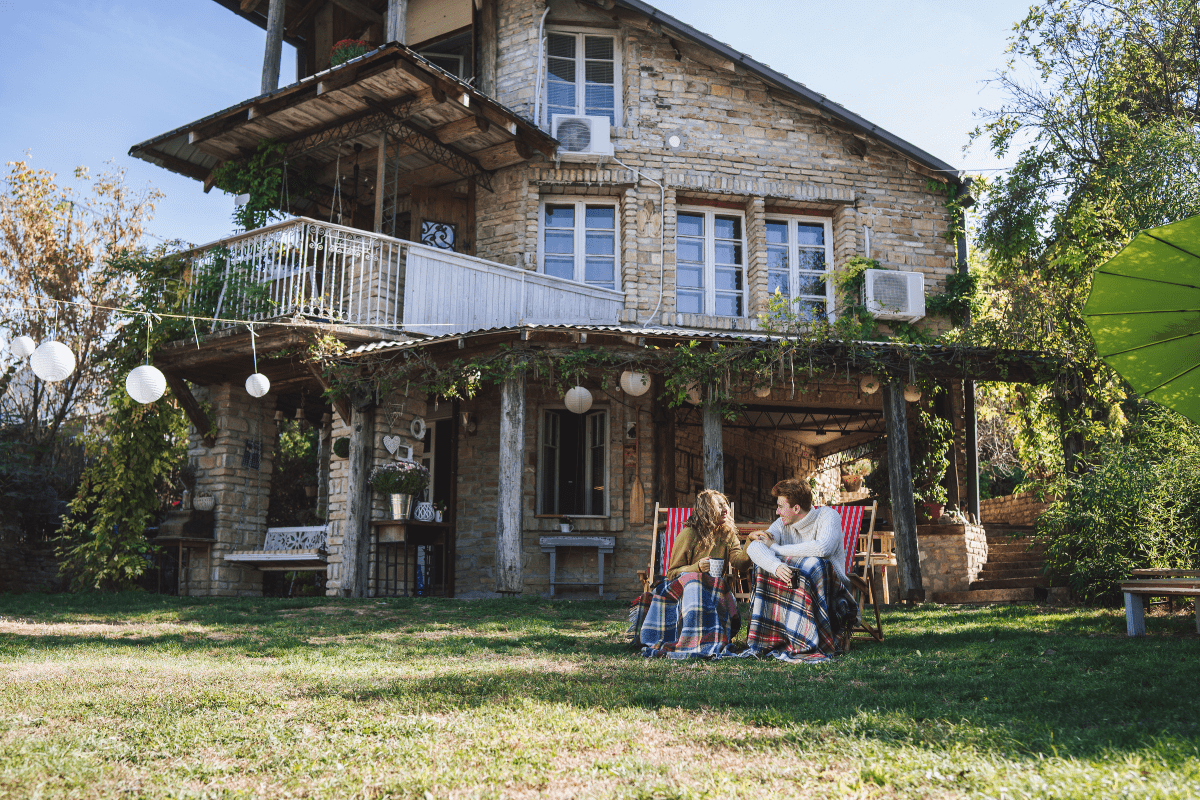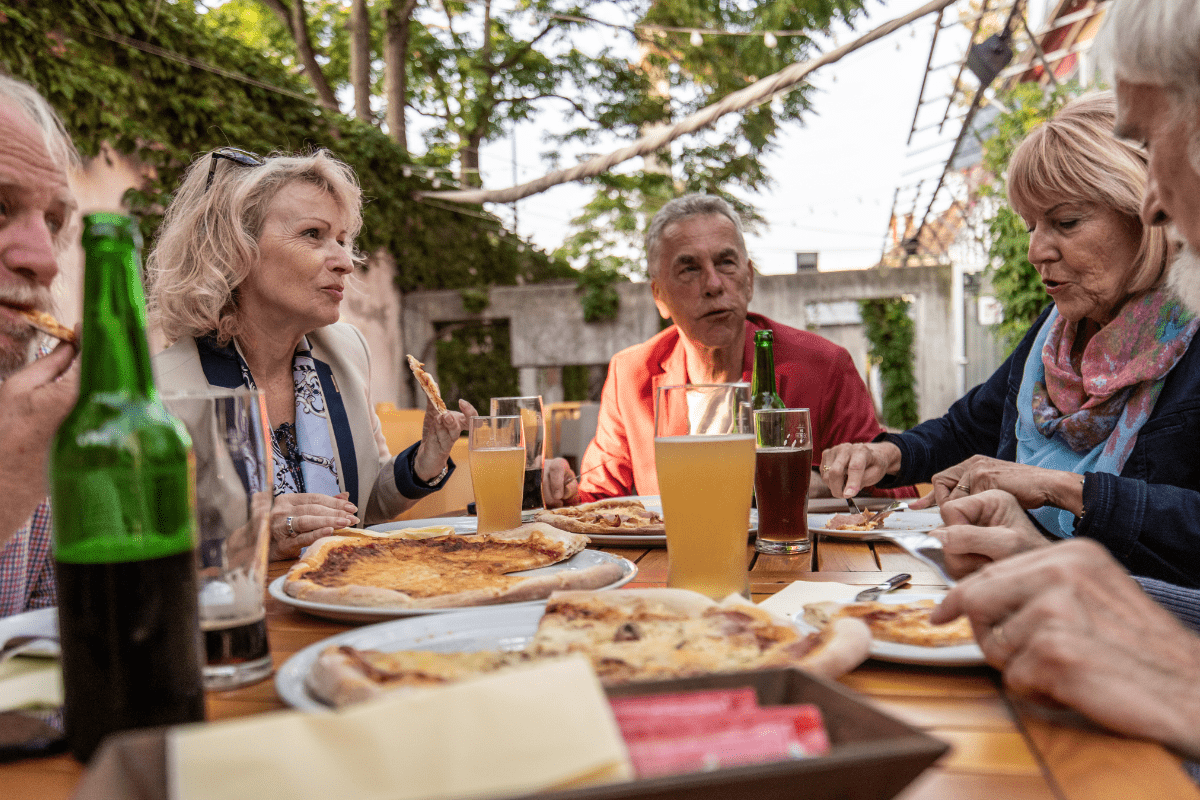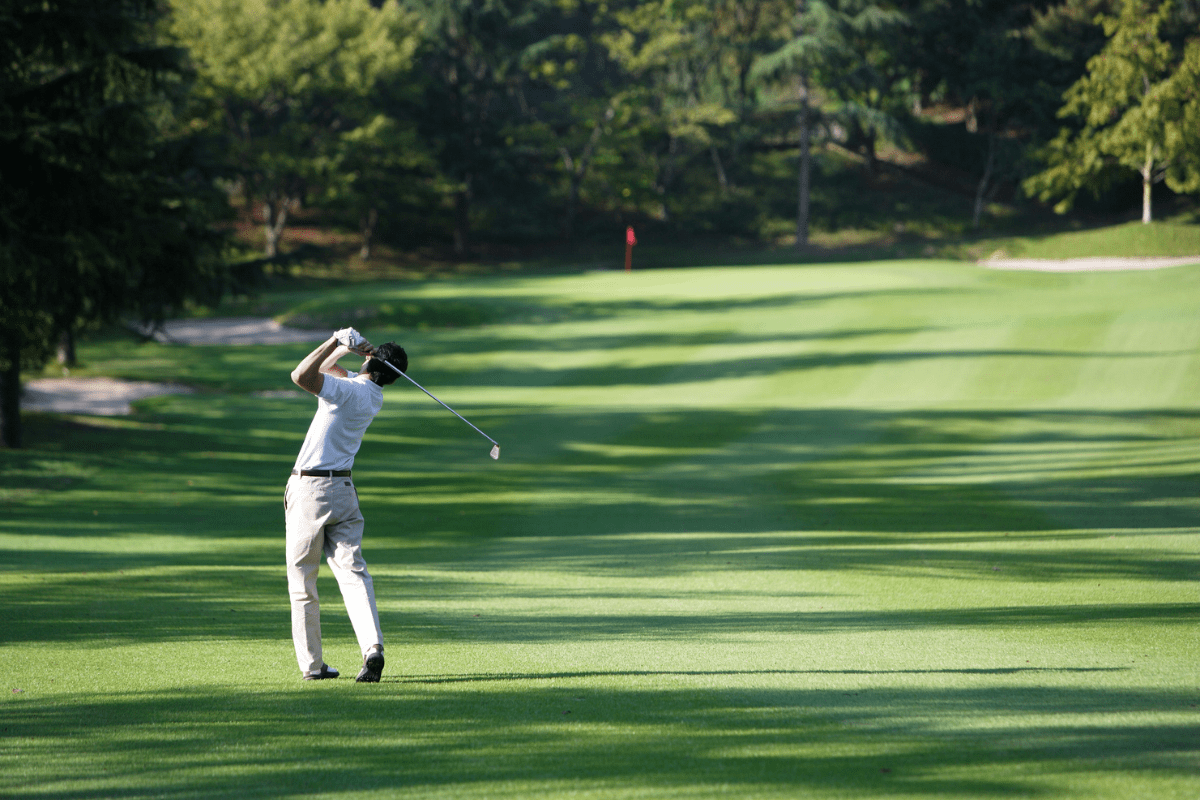Living in Naperville basically puts you at the center of the Midwest adventure universe, which honestly might be the best-kept secret in suburban planning. Within just a few hours of driving (or hopping on the Metra), you can experience everything from thundering waterfalls in ancient canyons to world-class museums that would make New Yorkers jealous. Let's dive into the day trip opportunities that'll make you appreciate your zip code even more.
The easy wins: Chicago's cultural treasures
Sometimes the best adventures are hiding in plain sight, and Chicago's museum district is exactly that kind of gem. Sure, you've probably driven past these places a million times, but when was the last time you actually went inside?
Art Institute of Chicago delivers world-class experiences
The Art Institute sits just 28 miles from Naperville, and honestly, it's criminal how many of us drive right past it without stopping. Adult admission runs $32, but Illinois residents get a sweet $27 rate that makes you feel slightly better about those property taxes. The real insider secret? Free Thursday evening admission from 5-8 PM during summer months (June through September) for Illinois residents.
This isn't your typical "let's get culture over with" museum experience. The collection spans 5,000 years of art, featuring the kind of masterpieces you've seen in textbooks but never thought you'd encounter in person. We're talking Monet water lilies, Van Gogh swirls, and Picasso experiments that'll make you question everything you thought you knew about art. Plan for 3-4 hours minimum if you want to do it justice, though you could honestly spend an entire day here.
Getting there via Metra costs $10-12 for the 33-45 minute journey to Union Station, plus just $2 for parking at the Naperville station. Compare that to $30+ for downtown parking, and suddenly that train ride looks pretty genius.
Field Museum brings prehistoric worlds to your doorstep
The Field Museum operates with one of the most generous policies I've encountered… Illinois residents get free basic admission every Wednesday from January through August. That's right, free. The catch? You need advance online reservations, so don't just show up hoping for the best.
SUE the T. rex serves as the obvious headline attraction, but the museum's scope goes way beyond dinosaurs. The Ancient Americas exhibit will completely change how you think about pre-Columbian civilizations, while Inside Ancient Egypt delivers the kind of mummy experiences that made you obsessed with archaeology as a kid. Budget 4-6 hours for a thorough exploration, because this place is massive.
The museum's location on the Museum Campus means you could theoretically hit multiple attractions in one day, though that's probably overkill unless you're running some kind of cultural marathon.
Nature escapes that'll surprise you
Illinois and Wisconsin pack some serious natural beauty into surprisingly accessible packages. These aren't just "nice for the Midwest" experiences… they're legitimately spectacular destinations that rival places you'd fly across the country to visit.
Starved Rock State Park proves Illinois has dramatic landscapes
Located 100 miles southwest in Utica, Starved Rock delivers the kind of canyon and waterfall scenery that feels completely impossible for Illinois. The park features 18 scenic canyons carved by glacial meltwater, connected by 13 miles of well-maintained hiking trails that range from easy strolls to legitimate workouts.
Here's what nobody tells you about timing: the park often reaches capacity by 11 AM on weekends from May through October. Parking costs just $5 for non-residents and $1 for Illinois residents during peak times, but you need to arrive early or prepare for disappointment.
Spring emerges as the absolute best season for waterfall viewing, when snowmelt and spring rains create legitimate thundering cascades through the sandstone canyons. The 80-stair climb to Starved Rock summit provides sweeping views of the Illinois River valley that'll make you wonder why you never knew this place existed.
Best hiking experiences at Starved Rock:
- St. Louis Canyon waterfall views
- French Canyon spring cascades
- Starved Rock summit overlook
- LaSalle Canyon geological formations
- Wildcat Canyon secluded trails
Devil's Lake State Park delivers Wisconsin's crown jewel
Devil's Lake State Park in Baraboo attracts over 3 million visitors annually, which should tell you something about its appeal. The 150-mile drive takes 2.5-3 hours, but you're rewarded with ancient quartzite bluffs surrounding a pristine 360-acre lake that looks like something from a travel magazine.
The park operates 29 miles of hiking trails ranging from easy lakeside walks to challenging 500-foot bluff climbs that'll test your cardiovascular fitness. Admission costs $13 for Wisconsin residents and $16 for non-residents, with the park open from 6 AM to 11 PM year-round.
The East Bluff Trail represents the park's signature challenge… a demanding 1.7-mile hike with exposed rock faces and panoramic views that justify every bit of effort. For families or those seeking easier terrain, the Balanced Rock Trail provides unique geological formations without the cardiovascular punishment.
Two designated swimming beaches make summer visits particularly appealing, while winter transforms the landscape into opportunities for ice climbing and cross-country skiing. The park's position along the Ice Age Trail adds historical significance to the natural beauty.
Lake Geneva combines natural beauty with sophisticated recreation
Lake Geneva sits just 79 miles north of Naperville, offering the kind of upscale outdoor experiences that feel more like vacation than day trip. The crown jewel is the 21-mile Geneva Lake Shore Path, a public walkway that encircles the entire lake while passing historic mansions and diverse terrain from sandy beaches to rocky outcroppings.
This free attraction provides 6-8 hours of walking for those completing the full loop, though most visitors choose shorter segments based on energy levels and available time. The combination of natural beauty and resort amenities creates an upscale day trip experience that consistently ranks among the region's best.
Water activities dominate the summer experience, with kayak and paddleboard rentals available throughout the lake area. Big Foot Beach State Park provides 900 feet of Lake Geneva shoreline with swimming areas and hiking trails through glacial terrain, while the nearby White River Trail offers 12 miles of former railroad bed converted to recreational trails.
Milwaukee's surprising cultural depth
Milwaukee operates as one of those cities that consistently exceeds expectations, particularly for day trippers who approach it with minimal preconceptions. The combination of world-class museums, historic neighborhoods, and genuine brewery culture creates experiences that rival much larger metropolitan areas.
Milwaukee Art Museum architecture rivals the collection
The Santiago Calatrava-designed building creates one of the most photographed museum experiences in the Midwest, with iconic "wings" that open and close daily providing a unique architectural spectacle. The building itself justifies the visit, but the collection of over 25,000 works spanning 40 galleries delivers substance beyond the Instagram-worthy exterior.
Pay-what-you-wish admission Thursday evenings from 4-8 PM makes the museum accessible to all budgets, while children 12 and under receive free admission year-round. Wisconsin K-12 teachers always receive free admission, and the museum regularly offers free community days throughout the year.
Recent visitor reviews consistently highlight the Georgia O'Keeffe works and rotating exhibitions as standout features. The museum requires a minimum 2-hour visit to experience the galleries and architecture adequately, though art enthusiasts could easily spend an entire day here.
Historic Third Ward creates urban sophistication
Milwaukee's Historic Third Ward combines galleries, boutique shopping, and innovative dining in a 20-block entertainment district that feels both authentic and carefully curated. The 20-block RiverWalk provides free scenic walking along the Milwaukee River, connecting multiple entertainment venues and restaurants without the tourist trap feeling that plagues similar districts in larger cities.
The Hop streetcar system connects key downtown areas for free, making it easy to explore multiple neighborhoods without driving or paying for parking. This kind of thoughtful urban planning makes Milwaukee surprisingly walkable for a Midwest city.
Milwaukee cultural district highlights:
- Santiago Calatrava museum architecture
- Free Thursday evening museum admission
- Historic Third Ward walkable entertainment
- Free Hop streetcar downtown connections
- Lakefront Brewery authentic tour experiences
Practical planning that actually works
Success with these day trips comes down to understanding timing, transportation logistics, and seasonal patterns that can make or break your experience. This isn't rocket science, but a little planning prevents the kind of frustrations that turn great destinations into disappointing memories.
Transportation strategies that save money and time
For Chicago destinations, Metra rail from Naperville Station provides the most sensible approach. Tickets cost $10-12 for the 33-45 minute journey to Union Station, with parking costing just $2 per day at the station. Compare that to $30+ for downtown parking, and the math becomes pretty obvious.
For destinations beyond Chicago, driving remains the most practical option, with optimal departure times between 7-9 AM to avoid rush hour traffic. Return trips should target late afternoon or early evening to minimize congestion, particularly when returning from Wisconsin destinations where Sunday evening recreational traffic can create unexpected delays.
Weekend travel generally offers lighter traffic except for Sunday evenings, when everyone else has the same brilliant idea to return from their weekend adventures. Spring and fall provide the best travel conditions with moderate temperatures and fewer weather-related delays.
Seasonal timing makes all the difference
Spring (April-May) emerges as the optimal season for most destinations, offering mild weather, blooming landscapes, and manageable crowds before peak summer tourism begins. Starved Rock's waterfalls reach peak flow during spring snowmelt, while Devil's Lake's wildflowers create spectacular displays throughout the park.
Summer (June-August) brings peak crowds and highest prices, but also full operational schedules and outdoor activities. All waterparks and outdoor attractions operate at capacity, while festivals and special events provide unique experiences unavailable during other seasons.
Fall (September-October) delivers perfect weather and stunning foliage throughout the region, with comfortable temperatures and fewer crowds than summer. October's fall colors transform destinations like Devil's Lake and Galena into photographer's paradises.
Best seasons for specific activities:
- Spring: Waterfall viewing, wildflower displays
- Summer: Swimming, outdoor festivals, full operations
- Fall: Foliage photography, comfortable hiking weather
- Winter: Indoor attractions, lowest prices
Dining experiences that enhance the journey
Chicago's dining scene ranges from casual deep-dish pizza to Michelin-starred restaurants, with Lou Malnati's and Giordano's providing quintessential deep-dish experiences for $20-40 for small groups. Kasama in Ukrainian Village offers Michelin-starred Filipino cuisine with breakfast sandwiches and $285 13-course dinner experiences that represent the city's evolving culinary landscape.
Milwaukee's culinary identity centers on brewery culture and German heritage, with Kopp's Frozen Custard representing true Wisconsin tradition and Mader's providing authentic German dining in a historic downtown chalet. Frozen custard, made with egg yolks, offers a unique Wisconsin experience unavailable in most other regions.
Lake Geneva's dining emphasizes lakefront experiences, with Pier 290 providing boat dock access and Geneva ChopHouse at Grand Geneva Resort offering upscale steakhouse dining. Seasonal farm-to-table ingredients highlight the region's agricultural heritage and create menus that change with the landscape.
Expert recommendations consistently emphasize making reservations for popular restaurants, particularly during peak season weekends. Casual dining options cost $15-30 per person, while fine dining experiences range from $50-300+ per person depending on the establishment and menu choices.
Making it happen
These day trip opportunities exist because Naperville sits at the center of an incredibly diverse region that most people never fully explore. The strategic location provides unparalleled access to natural beauty, cultural enrichment, urban entertainment, and culinary adventures that often exceed what you'd find in traditionally celebrated destinations.
Success depends on strategic planning around seasonal patterns, crowd management, and transportation logistics, but the payoff justifies the effort. Spring and fall offer optimal conditions for most destinations, while early morning departures and advance planning ensure the best experiences possible.
The combination of free attractions, reasonably priced options, and premium experiences allows visitors to customize day trips according to their interests and budgets. Whether seeking adventure, culture, entertainment, or relaxation, the region surrounding Naperville provides exceptional opportunities for memorable day trips that rival destinations much farther from home… and probably cost a lot less to reach.





